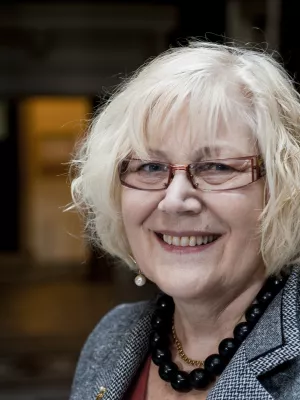
Ingalill Rahm Hallberg
Professor emerita

Functional ability and health complaints among older people with a combination of public and informal care vs. public care only.
Author
Summary, in English
The aim of the study was to investigate functional ability and health complaints of people, 65+, living in special accommodation (equivalent to nursing home) and their counterparts who live at home and receive municipal care or a combination of municipal and informal care. Persons (n = 1958) receiving municipal care were assessed in terms of functional ability, health complaints, and level of informal and municipal care and services. The results showed that more home care, services and help with Instrumental Activities of Daily Living (IADL) were provided to those receiving only municipal care at home, while more home care and services associated with Personal Activities of Daily Living (PADL) as well as nursing care were provided to those receiving informal care in addition to formal care. Cohabitation was a predictor of a combination of municipal and informal care in the home (OR: 5.935), while assistance with IADL provided by municipal home care and services predicted municipal care only (OR: 0.344). Care in special accommodation was predicted by advanced age (OR: 1.051), dependency in IADL (OR: 19.883) and PADL (OR: 2.695), and impaired cognitive ability (OR: 3.849) with receiving municipal care only as a reference. Living alone (OR: 0.106), dependency in IADL (OR: 11.348) and PADL (OR: 2.506), impaired cognitive ability (OR: 3.448), impaired vision or blindness (OR: 1.812) and the absence of slowly healing wounds (OR: 0.407) were predictors of special accommodation with a combination of informal and municipal care at home as a reference. The distribution of municipal care divided older people into three distinct groups. The most frail and elderly people who had no cohabitants received care in special accommodation, determined by their level of physical and cognitive dependency. The frailest individuals living at home were cohabiting and received a combination of municipal and informal care, while those who were less dependent mainly had help with IADL from municipal care only. The results indicate that there is a shift from the substitution to the complementary model and highlights that attention to the family carers is needed.
Department/s
- Department of Health Sciences
Publishing year
2008
Language
English
Pages
136-148
Publication/Series
Scandinavian Journal of Caring Sciences
Volume
22
Issue
1
Full text
- Available as PDF - 131 kB
- Download statistics
Links
Document type
Journal article
Publisher
Wiley-Blackwell
Topic
- Nursing
Status
Published
ISBN/ISSN/Other
- ISSN: 1471-6712

